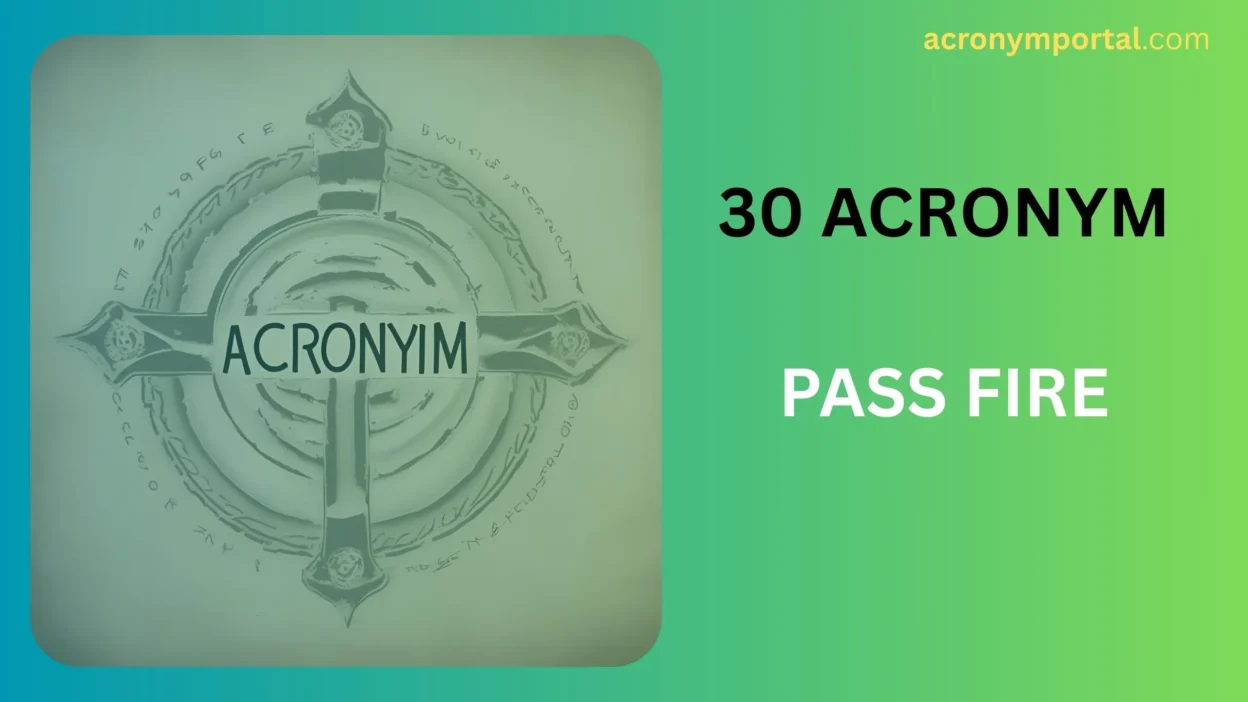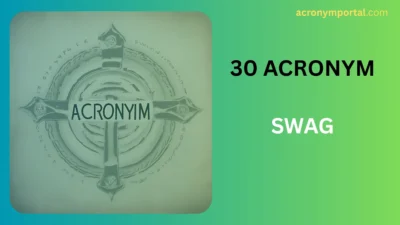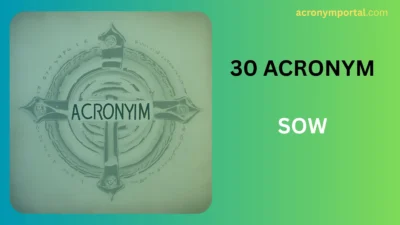Whether you’re training for workplace safety, reviewing emergency procedures, or simply brushing up on basic fire safety knowledge, you’ve probably come across the “PASS” acronym. It’s a simple, memorable way to teach people how to use a fire extinguisher—but it’s not the only way to communicate that process.
In this guide, we’ll break down what PASS means, explore its tone and intent, and then introduce 30 creative or context-based alternatives—each with clear explanations and example sentences.
We’ll also give you guidance on when to use which version—whether you’re leading a fire drill, writing a safety manual, or teaching kids. Let’s make fire safety easier, smarter, and more engaging!
🔥 What Does the PASS Fire Acronym Mean?
PASS stands for:
- P – Pull the pin
- A – Aim the nozzle
- S – Squeeze the handle
- S – Sweep side to side
It’s one of the most common methods used in fire safety training, especially when explaining how to use a fire extinguisher.
Traits associated with PASS:
- Direct
- Easy to remember
- Instructional
- Emotionally neutral
- Typically used in formal or safety-focused contexts
Now let’s look at 30 ways to say the same thing—or tailor it for different audiences, tones, and settings.
🚒 30 PASS Alternatives + When to Use Them
1. Pull, Aim, Squeeze, Sweep
- Use when: You want a full written version without abbreviations.
- Example: Remember—pull, aim, squeeze, and sweep when using the extinguisher.
2. Extinguisher steps
- Use when: You need a simple header or label.
- Example: Follow these extinguisher steps in case of fire.
3. 4-Step Method
- Use when: Training settings that favor numbered instructions.
- Example: Use the 4-Step Method to control small fires.
4. P.A.S.S. Technique
- Use when: Emphasizing it as a recognized system.
- Example: Use the P.A.S.S. Technique for safe extinguisher use.
5. Pull–Aim–Squeeze–Sweep Method
- Use when: In manuals or documentation.
- Example: Refer to the Pull–Aim–Squeeze–Sweep Method in emergencies.
6. Fire extinguisher basics
- Use when: Training new hires or the public.
- Example: Let’s go over fire extinguisher basics.
7. Stop and PASS
- Use when: Creating an easy-to-remember alert.
- Example: Stop and PASS before tackling the flame.
8. PASS System
- Use when: Referring to the acronym as a structured system.
- Example: We use the PASS system in all training sessions.
9. Extinguisher protocol
- Use when: Referring to procedures in professional environments.
- Example: Know the extinguisher protocol for your department.
10. Step-by-step extinguisher use
- Use when: In guides or checklists.
- Example: Here’s a step-by-step extinguisher use breakdown.
11. Fire response routine
- Use when: Framing it in terms of response behavior.
- Example: Practice your fire response routine monthly.
12. Extinguish a fire in 4 steps
- Use when: Making the process approachable.
- Example: You can extinguish a fire in 4 steps—easy and fast!
13. Grab-Aim-Spray-Sweep
- Use when: Teaching children or in casual scenarios.
- Example: Grab-Aim-Spray-Sweep—think of it like a garden hose.
14. Safety 4-step
- Use when: Referring to it in quick reference guides.
- Example: Use the safety 4-step before approaching any fire.
15. Mini Fire Drill
- Use when: In educational environments or schools.
- Example: Let’s run a mini fire drill and use our PASS skills.
16. Know Your PASS
- Use when: Encouraging awareness or assessments.
- Example: Know your PASS—it could save lives.
17. Quick Extinguisher Guide
- Use when: In posters or signage.
- Example: Follow this quick extinguisher guide in emergencies.
18. The 4-Actions Rule
- Use when: Framing it as a rule.
- Example: Apply the 4-Actions Rule: pull, aim, squeeze, and sweep.
19. PAST Fire Formula
- Use when: Offering a mnemonic twist (Pull, Aim, Squeeze, Track)
- Example: Use the PAST formula—think of tracking the flames side to side.
20. Fire-Fight Four
- Use when: In campaign or promotional safety messaging.
- Example: Master the Fire-Fight Four to stay prepared.
21. Ready-Set-Spray-Sweep
- Use when: Teaching young learners or simple audiences.
- Example: Ready-Set-Spray-Sweep—it’s as easy as that.
22. Pull, Point, Press, Pan
- Use when: Offering an alternate mnemonic (with “pan” meaning side sweep).
- Example: Pull, point, press, pan—4 easy steps.
23. Basic Fire Tactics
- Use when: General safety instruction.
- Example: Let’s review some basic fire tactics using a fire extinguisher.
24. Your Fire Response Plan
- Use when: Tying into larger safety strategies.
- Example: Include PASS in your fire response plan.
25. Fire Tool Routine
- Use when: Emphasizing tools and hardware.
- Example: Follow the fire tool routine each time you handle an extinguisher.
26. Safety Drill Shortcut
- Use when: Highlighting quick steps.
- Example: Here’s a safety drill shortcut to remember: PASS.
27. Extinguisher Rule of 4
- Use when: Adding a formal or instructional label.
- Example: Use the extinguisher rule of 4 in every scenario.
28. Fire-Stop Formula
- Use when: Branding training materials or guides.
- Example: Apply the Fire-Stop Formula when flames break out.
29. Control the Flame
- Use when: Making messaging action-oriented.
- Example: Control the flame—pull, aim, squeeze, sweep.
30. Handle With PASS
- Use when: Offering a reminder phrase.
- Example: Always handle with PASS when using an extinguisher.
🧭 Choosing the Right Alternative: Tone & Setting
| Tone/Context | Best Options |
| Formal Training | “P.A.S.S. Technique,” “Extinguisher protocol,” “4-Step Method” |
| Kids/Educational | “Grab-Aim-Spray-Sweep,” “Ready-Set-Spray-Sweep” |
| Workplace/Manuals | “Fire-Fight Four,” “Fire response routine,” “Know Your PASS” |
| Visual/Quick Guides | “Quick Extinguisher Guide,” “Fire-Stop Formula” |
| Public Awareness | “Control the Flame,” “Handle With PASS” |
🌍 Cultural & Emotional Nuances
- In safety training worldwide, “PASS” is widely recognized—changing it could cause confusion unless supported with explanation.
- In schools or casual education settings, alternatives like “Grab-Aim-Spray-Sweep” can make things more relatable and easier to remember.
- For multilingual or ESL learners, full phrases like “Pull the pin, Aim, Squeeze, Sweep” are clearer than acronyms.
🎯 Final Thoughts
While PASS is the industry standard, there’s power in flexibility—especially when training different audiences or tailoring communication for clarity and impact. Use these alternatives to make your safety messages more engaging, memorable, and human.




